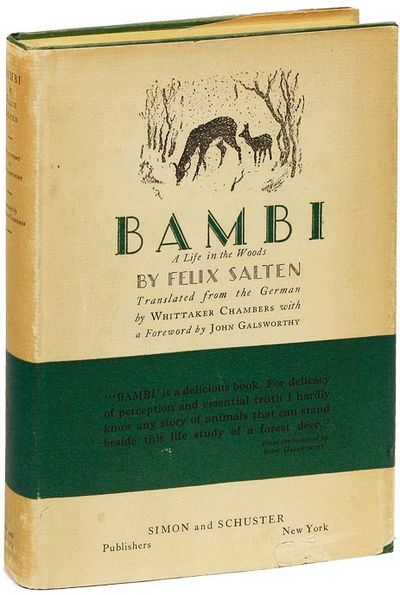


Jack Zipes’s introduction traces the history of the book’s reception and explores the tensions that Salten experienced in his own life-as a hunter who also loved animals, and as an Austrian Jew who sought acceptance in Viennese society even as he faced persecution. Life in the forest is dangerous and precarious, and Bambi learns important lessons about survival as he grows to become a strong, heroic stag. Originally published in 1923, Salten’s story is more somber than the adaptations that followed it. This masterful new translation gives contemporary readers a fresh perspective on this moving allegorical tale and provides important details about its creator.

For decades, readers’ images of Bambi have been shaped by the 1942 Walt Disney film-an idealized look at a fawn who represents nature’s innocence-which was based on a 1928 English translation of a novel by the Austrian Jewish writer Felix Salten. Paul Reitter’s afterword discusses the surprising political readings to which Salten’s fable of the woods was subjected.Most of us think we know the story of Bambi -but do we? The Original Bambi is an all-new, illustrated translation of a literary classic that presents the story as it was meant to be told. In Damion Searls’s new translation the fawn Bambi and his mother, the groves and thickets of the forest, the open and dangerous space of the great field, the ever-present threat of the human-the whole intricate weave of life and death that Salten handles so deftly-all come alive for a new generation of readers. Bambi is certainly a book that children can enjoy, but it is also a moving and lasting contribution to the literature of the natural world. Later Walt Disney made his famous movie of the book, and as a consequence Salten’s intimate, delicate, poetic, and gripping tale of forest life, a book that captures both the calm and the disquiet of the animal world, has come to be thought of as a children’s book. An English translation soon appeared with an introduction by the Nobel Prize winner John Galsworthy and was widely and well reviewed. Newly retranslated, this elemental novel about danger, loss, and coming of age in the natural world was the source material for the classic Disney animated film.īambi first came out in Vienna a hundred years ago, the work of Felix Salten, a Viennese litterateur, journalist, and man about town, and was an immediate success with readers.


 0 kommentar(er)
0 kommentar(er)
